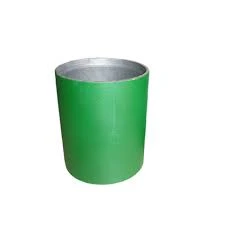- Afrikaans
- Albanian
- Amharic
- Arabic
- Armenian
- Azerbaijani
- Basque
- Belarusian
- Bengali
- Bosnian
- Bulgarian
- Catalan
- Cebuano
- Corsican
- Croatian
- Czech
- Danish
- Dutch
- English
- Esperanto
- Estonian
- Finnish
- French
- Frisian
- Galician
- Georgian
- German
- Greek
- Gujarati
- Haitian Creole
- hausa
- hawaiian
- Hebrew
- Hindi
- Miao
- Hungarian
- Icelandic
- igbo
- Indonesian
- irish
- Italian
- Japanese
- Javanese
- Kannada
- kazakh
- Khmer
- Rwandese
- Korean
- Kurdish
- Kyrgyz
- Lao
- Latin
- Latvian
- Lithuanian
- Luxembourgish
- Macedonian
- Malgashi
- Malay
- Malayalam
- Maltese
- Maori
- Marathi
- Mongolian
- Myanmar
- Nepali
- Norwegian
- Norwegian
- Occitan
- Pashto
- Persian
- Polish
- Portuguese
- Punjabi
- Romanian
- Russian
- Samoan
- Scottish Gaelic
- Serbian
- Sesotho
- Shona
- Sindhi
- Sinhala
- Slovak
- Slovenian
- Somali
- Spanish
- Sundanese
- Swahili
- Swedish
- Tagalog
- Tajik
- Tamil
- Tatar
- Telugu
- Thai
- Turkish
- Turkmen
- Ukrainian
- Urdu
- Uighur
- Uzbek
- Vietnamese
- Welsh
- Bantu
- Yiddish
- Yoruba
- Zulu
casing and tubing connections
Casing and Tubing Connections An Essential Overview
In the oil and gas industry, the integrity and function of wells are paramount. Casing and tubing connections play an essential role in ensuring the efficiency and safety of drilling operations. Understanding these components is crucial for engineers, drillers, and all personnel involved in well construction and maintenance.
Casing refers to the series of pipes that are installed in the wellbore after drilling. It serves multiple purposes, including protecting the well from contaminants, preventing the collapse of the wellbore, and isolating different pressure zones within the earth. In essence, casing creates a stable environment for the well to function effectively.
Once the well is cased, the tubing is installed inside the casing. Tubing is a smaller diameter pipe through which hydrocarbons are produced to the surface. The connection between casing and tubing is critical, as it needs to withstand high-pressure conditions, corrosion, and other demanding factors encountered during operations.
There are multiple types of connections used in casing and tubing, with some of the most common being threaded and welded connections. Threaded connections involve precisely machined threads on both components, which interlock to form a tight seal. This method is often favored due to its ease of installation and the ability to disassemble the components if necessary. However, they can be prone to fatigue over time, especially under dynamic loads.
casing and tubing connections

On the other hand, welded connections involve the fusion of the casing and tubing at their junction. This method forms a permanent bond, providing excellent pressure containment and making it less susceptible to failure induced by external conditions. However, the downside is the lack of flexibility in repairing or replacing components without cutting and re-welding.
Another crucial development in casing and tubing technology is the evolution of premium connections. These connections are specially designed with enhanced features that provide superior strength and sealing capabilities. Premium connections address many issues related to traditional threads, such as stress concentrations and fatigue failures, making them ideal for challenging environments, including deepwater applications and high-pressure wells.
Moreover, advancements in materials used for casing and tubing have also garnered attention. Traditionally, carbon steel was the material of choice; however, the industry is now leaning towards more advanced alloys and composite materials that provide better corrosion resistance and strength. These innovations are crucial for extending the lifespan of wells and reducing maintenance costs.
Regular monitoring and maintenance of casing and tubing connections are vital to ensure long-term success. Engineers often employ non-destructive testing techniques to evaluate the integrity of connections over time. Methods such as ultrasonic testing, magnetic particle inspection, and radiography help detect issues before they escalate, thus maintaining the safety and efficiency of the operations.
In conclusion, casing and tubing connections are fundamental components in the oil and gas industry. Their design and integrity directly influence the well's performance and safety. With ongoing advancements in technology, materials, and engineering practices, the focus remains on improving these connections to meet the ever-evolving demands of the industry. Understanding the intricacies of casing and tubing connections is essential for optimizing well operations and ensuring the sustainable extraction of resources. As the industry continues to face challenges, investment in research, development, and training will be crucial for harnessing the full potential of casing and tubing systems.
-
Tubing Pup Joints: Essential Components for Oil and Gas OperationsNewsJul.10,2025
-
Pup Joints: Essential Components for Reliable Drilling OperationsNewsJul.10,2025
-
Pipe Couplings: Connecting Your World EfficientlyNewsJul.10,2025
-
Mastering Oilfield Operations with Quality Tubing and CasingNewsJul.10,2025
-
High-Quality Casing Couplings for Every NeedNewsJul.10,2025
-
Boost Your Drilling Efficiency with Premium Crossover Tools & Seating NipplesNewsJul.10,2025







